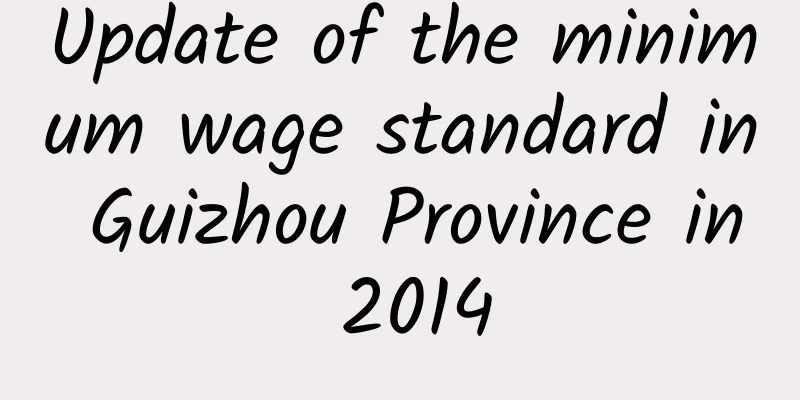Made in China needs to speed up its pace

|
The appreciation of the RMB, the rising cost of labor and other factors, and the new international trade frictions brought about by carbon emission reduction/carbon tariffs have caused China's manufacturing industry to face unprecedented development confusion. In fact, as "Made in China" is marketed around the world, its role in the global value chain division of labor is becoming increasingly important. However, China's manufacturing industry has low economic creativity, low added value, and unbalanced distribution of trade benefits, which has also made the development space of "high growth, low added value" "Made in China" increasingly narrow. How to get rid of the old development model of China's "Made in China" and achieve new breakthroughs at a new and higher starting point is a major strategic issue that determines the future direction of "Made in China". During the 30 years of reform and opening up, my country's manufacturing industry has achieved rapid development. From 1978 to 2006, the added value of my country's manufacturing industry above designated size, calculated on a comparable basis, grew by about 15% annually, higher than the average annual growth rate of all industries and GDP. The huge production capacity of "Made in China" means that every 10% growth it produces can drive global economic growth by one percentage point. For more than 20 years, China's manufacturing industry has grown at the fastest rate in the world, and the growth rate of the proportion of manufacturing has far exceeded that of the United States. On the other hand, the labor productivity and added value rate of my country's manufacturing industry are relatively low, about 4.38% of the United States, 4.37% of Japan and 5.56% of Germany. There is still a gap in the quality of China's manufacturing industry with developed countries. Since China's manufacturing industry is still in the middle and lower reaches of the world's manufacturing industry chain, most of my country's exported products are "three lows" products with low technology content, low unit price and low added value, but a large number of "three highs" products with high technology content, high added value and high price are imported. The price terms of trade of my country's manufacturing sector with the United States show a clear deterioration trend, reflecting the weakening of my country's unit export commodity exchange capacity, while the trade benefits and trade added value obtained from each unit of exported goods are declining. my country's high export growth is due to the rapid expansion of export volume, and the export, which is mainly processing trade, has diverted some other developed countries' trade with the United States, thus making my country have an illusory "trade surplus". China's manufacturing industry is in an unbalanced distribution of trade with the United States, causing the proportion of the world's top five trade surplus and deficit economies in the world's trade surplus and deficit to expand from 20% 20 years ago to 60% today. China's manufacturing industry faces major challenges China's manufacturing industry is facing unprecedented challenges. Low wages, high energy consumption and high export tax rebate subsidies are becoming increasingly unsustainable. Coupled with the rising prices of raw materials and the rapid appreciation of the RMB exchange rate, China's manufacturing industry is already struggling. In the exchange rate and trade disputes, the international external environment that China faces in the future will also undergo profound changes. First of all, there is the overall pressure brought by the appreciation of the RMB. Since last year, under the global pattern of "rising in the east and falling in the west, hot in the south and cold in the north", the RMB has appreciated by 3.01% throughout the year. Statistics show that since the exchange rate reform in 2005 to the end of November 2010, the RMB exchange rate against the US dollar has appreciated by 23.97%, and the exchange rate against the euro has appreciated by 14.00%. The overall appreciation of the RMB will inevitably have a fundamental impact on China's manufacturing. The profit margin of China's traditional labor-intensive export enterprises is about 3%-5%. According to the stress test conducted on the manufacturing industry in coastal areas in the first half of 2010, if the RMB appreciates by 3%, many labor-intensive small enterprises will also face a very big impact and development difficulties. The second biggest pressure comes from the gradual decline of the "demographic dividend". Relying on the world's largest population size and a highly productive population structure, China not only provides sufficient labor supply for economic growth, but also creates an unparalleled comparative advantage for low-end manufacturing. For a long time, my country's economic growth has mainly relied on investment, labor input and export-driven growth, and has not formed an economic growth model driven by technology, productivity and domestic demand. Under the conditions of abundant labor resources and a significant dual structure in China, and the marginal productivity of the agricultural sector is significantly lower than that of the industrial sector, due to the relatively abundant labor resource supply and cheap labor, enterprises have been able to overcome the law of diminishing marginal returns of capital and gain advantages in domestic and foreign markets with cheap labor-intensive products. The abundant labor resources and cost advantages have made my country a world factory and an engine of world economic growth. All this is likely to change significantly due to the revaluation of labor prices. According to statistics from the Chinese Academy of Social Sciences, the proportion of my country's working-age population reached a peak of 72.35% in 2009, after which the total amount of the direct "demographic dividend" will enter a downward channel, and is expected to drop to 67.32% in 2030. Therefore, the labor force will no longer be in unlimited supply, and the era of low labor costs will gradually become history. In this way, "wage increases" will create an "expulsion effect" or "reverse pressure effect" on manufacturing companies with low labor costs through more fair and reasonable labor remuneration income, forcing those companies at the low end of the industrial chain, without technological content, and unable to guarantee the rights and interests of workers to achieve transformation and upgrading, thus forming a mechanism of "upward competition" among companies. However, the greatest pressure is likely to come from external shocks caused by global structural adjustments and future carbon tariffs. At present, the low-carbon economy has become the main battlefield for global competition and interest pattern adjustment in the post-financial crisis era. China must accelerate the adjustment of its manufacturing structure. China's energy consumption per unit of output value is more than twice the world average; the average unit energy consumption of major products is 40% higher than the advanced level abroad. Many Chinese "high-pollution, high-consumption, high-input" manufacturing enterprises are at a critical juncture of "life and death". In fact, with the gradual development of economic globalization in the past two decades, the pattern of "low-income countries producing and high-income countries consuming" in the global division of labor has naturally created a situation where developing countries have to pay for the "high pollution, high consumption, and high emissions" in the global low-end manufacturing links. Many developed countries have transferred high-emission industries to China, making China the largest position for carbon transfer in the world. Relevant data show that China's carbon transfer caused by this industrial transfer alone is as high as 1.2 billion tons per year, accounting for nearly 20% of China's current total carbon emissions. Debt-ridden countries will make life difficult for developed countries in Europe and the United States next year. Under such circumstances, it is very likely that European and American countries will impose carbon tariffs on their own. It is foreseeable that in the future, the balance of international payments, carbon trade frictions, exchange rate issues, carbon emission reduction quotas and their allocation issues will be highly linked to the imposition of carbon tariffs. China's low-end manufacturing and trade structure must accelerate the pace of transformation and upgrading. On the one hand, it is necessary to vigorously develop low-carbon industries and services; on the other hand, it is also necessary to improve energy production efficiency and comprehensive utilization efficiency and get rid of excessive dependence on carbon-based energy. China is facing unprecedented internal and external troubles, and there is really not much time left for China's manufacturing transformation. (The author is an associate researcher at the Forecasting Department of the National Information Center) |
<<: China's manufacturing industry needs to overcome three challenges in 2011
>>: 2011 Spring Festival Holiday Notice
Recommend
What impact does eBay's return policy have on Chinese sellers? How do eBay sellers deal with it?
What impact does eBay's return policy have on...
The latest EICC certification code of conduct includes five major points
The Electronic Industry Citizenship Coalition (EI...
HM factory audit procedures
HM factory audit procedures Page 1 of 1 Hallmark ...
How is Youqi Logistics? What services does Youqi Logistics provide?
How about Youqi Logistics? Shenzhen Youqi Logisti...
Misunderstandings about the ownership of certification work when implementing ISO9000 certification in small and medium-sized enterprises
Misunderstandings about the ownership of certific...
AVE Factory Inspection Environmental Guidelines--AVE Factory Inspection Consulting
AVE Factory Audit Environmental Guidelines 1.0 Pur...
WAL-MART factory inspection rectification report issues
Question 1: According to factory regulations, the...
Key points that auditors will pay attention to when conducting factory inspections on discrimination issues
Discrimination means that employers must not infr...
SA8000 factory inspection factory dormitory hygiene environment and safety violations
SA8000 factory inspection factory dormitory hygie...
What is Yimaibao? What are the functions of Yimaibao?
What is Yimaibao? Yimaibao is a cross-border e-co...
5 ways promoting your listings on eBay can help you increase sales
As a paid advertising service, eBay Promoted List...
The BSCI audit qualifications of the six major auditing agencies will be terminated on July 12, 2016
After July 12, 2016, CISE, DNV, EUROCERT, GLOBALGR...
French Sanofi-Aventis Group Factory Inspection-Introduction
The birth of Sanofi-Aventis Group: With the succe...
GoDaddy - The Overlord in Hosting
What is GoDaddy? GoDaddy is an American company t...
Commonly used reference data for factory inspection
1. Air quality/exhaust system: 1. The air in all ...









